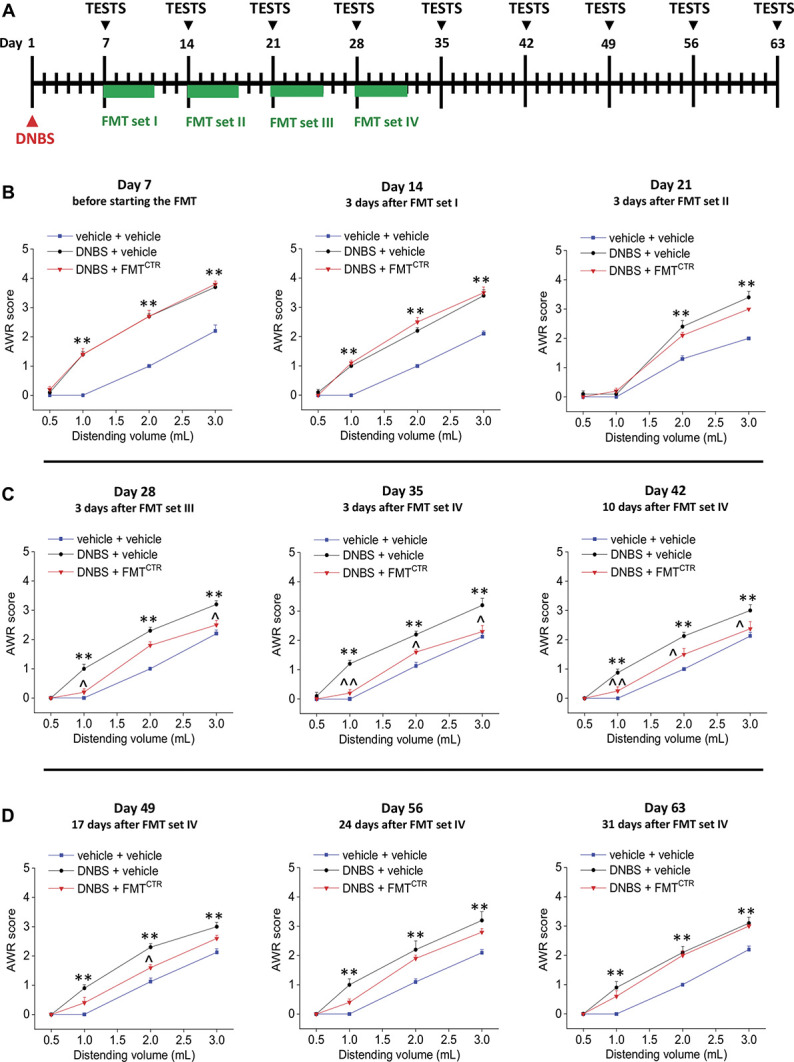Figure 7.

Therapeutic effect of FMT on DNBS-induced postinflammatory visceral pain. As shown in the scheme (A), rats were intrarectally injected with DNBS (30 mg in 0.25 mL EtOH 50%); on day 7, DNBS-injected animals were divided into 2 groups, respectively, administered with the vehicle or the FMT from CTR donors per os for 5 consecutive days. The FMT set was weekly repeated for 4 times. Behavioral tests were performed at the end of the antibiotic treatment, 3 days after each cycle of FMT, and once a week afterwards (B-D). Visceral sensitivity was assessed in the animals by measuring the AWR to CRD (0.5-3 mL). Each value is the mean ± SEM of 5 animals per group. Statistical analysis was one-way analysis of variance followed by Bonferroni post hoc comparison. *P < 0.05 and **P < 0.01 vs vehicle or vehicle + vehicle–treated animals. ^P < 0.05 and ^^P < 0.01 vs DNBS + vehicle–treated animals. abx, antibiotics; AWR, abdominal withdrawal reflex; CRD, colorectal distension; CTR, control animals; DNBS, dinitrobenzenesulfonic acid; FMT, faecal microbiota transplantation.
